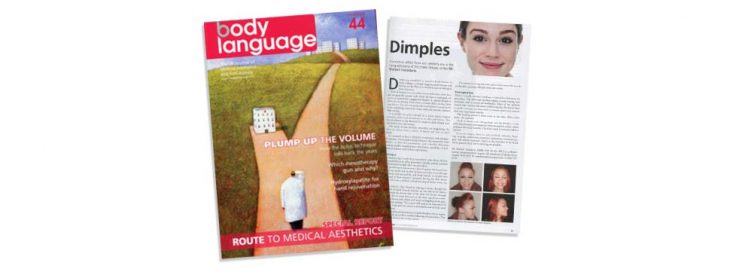
A knock-on effect from our celebrity era is the rising popularity of the cheek dimple
Dimples are considered an attractive facial feature. In Asian folklore a dimple suggests good fortune and fertility: in the West it is viewed as cute or adding to facial character.
Natural dimples occur on either one or both sides of the face. And are generally present only when the face is animated. often to an unnaturally exaggerated degree. A natural dimple is believed to be formed when there is a small depth in the cheek musculature. The skin overlying this small defect is stuck dawn to the underlying connective tissue when the muscle contracts while smiling.
It is possible to create dimple minor plastic surgical procedure under local anaesthetic as office procedure. This has contributed to the demand for surgical cheek dimple creation both in men and women.
The results of this aesthetic procedure are longlasting. Patients can choose from a variety of depths and sizes on their cheeks.
It is essential to have a detailed consultation with prospective patients. This includes medical history, the reason they want dimples, an intra-oral examination, and a detailed discussion covering possible complications, limitation, possibility of revisional procedures and realistic expectations
Technique
The dimple surgery under local anaesthetic takes about 20 minutes to perform as an office procedure. Usually normal activities can be resumed straight after the procedure.
A punch biopsy instrument is placed against the buccal mucosa (inner cheek) and circular motions are made to cut through the mucosa, sub mucosal far, and cheek muscle. A circular core composed of these tissues is removed, leaving the skin intact, which will create a shallow cylindrical-shared defect under the skin.
This defect is then closed by placing a suture through the inner skin of the cheek (buccal mucosa) on one side of the defect then through the dermis layer of the skin, and finally through the inner skin of the cheek (mucosa) on the other side of the defect. A surgical knot is tied. which will result in dimpling of the skin even without smiling. This suture will need to be removed 6-8 days later. Sometimes the suture is absorbable and will not need to be removed.
We have observed persistence of the cheek dimples even in repose without smile up to three months following the procedure. The skin usually flattens out in due course.
The internal suiting that takes place will connect the muscle to the skin, creating a dimple when one smiles.
Post-operative
There is usually minimal swelling or discomfort following the procedure. The aftercare involves regular mouth rinsing with antiseptic and a course of antibiotics. Most of our patients resume their work on the same or following day. We advise them to avoid strenuous activities such as contact sports and exercise that may cause facial injuries.
The healing period is from seven to ten days. After a few weeks, the operated cheek or cheeks start taking shape and the dimples, or the cleft chin. become more apparent when the patient smiles which animates the facial muscles. The final result is assessed within 3 months.
Comments (0)